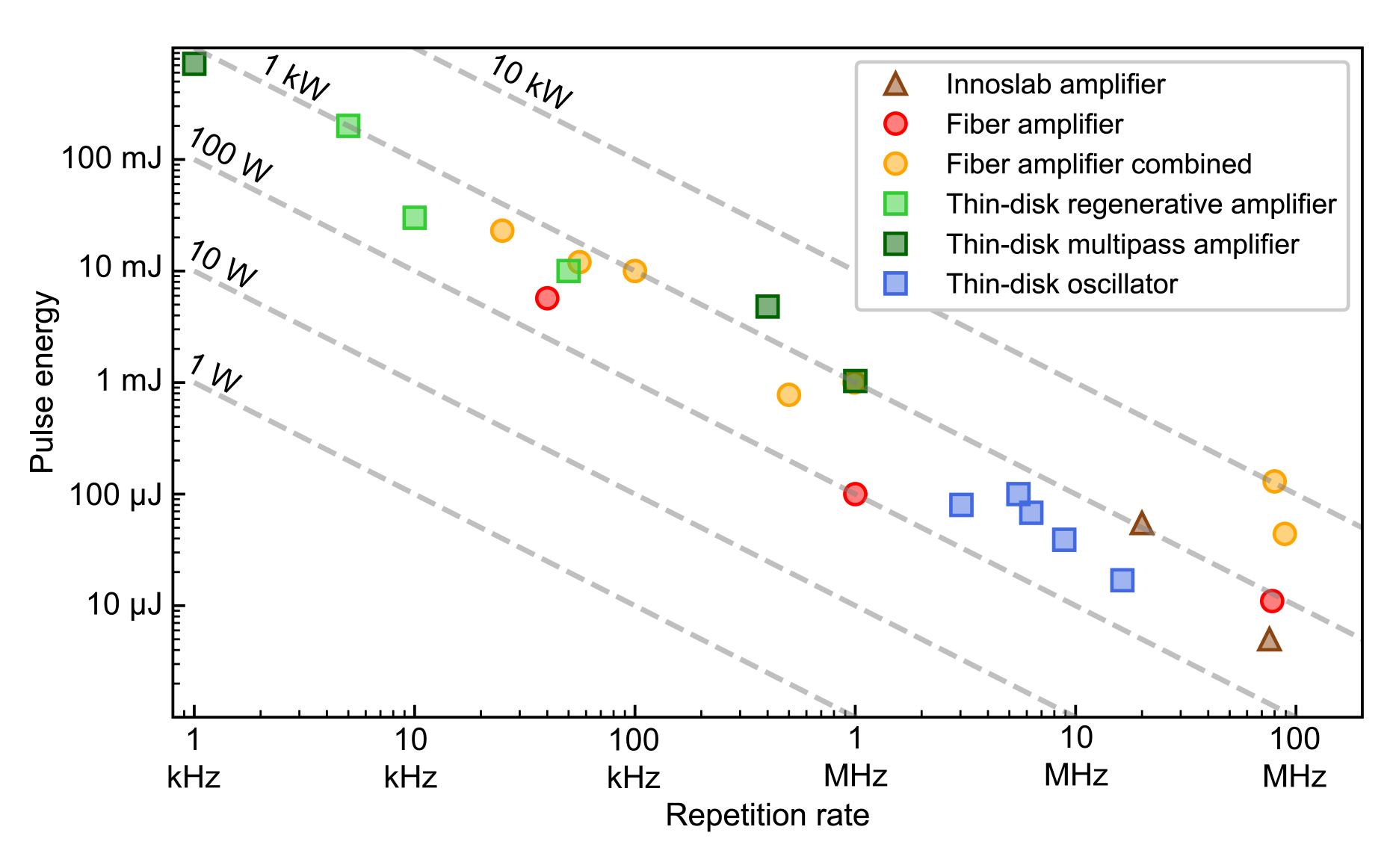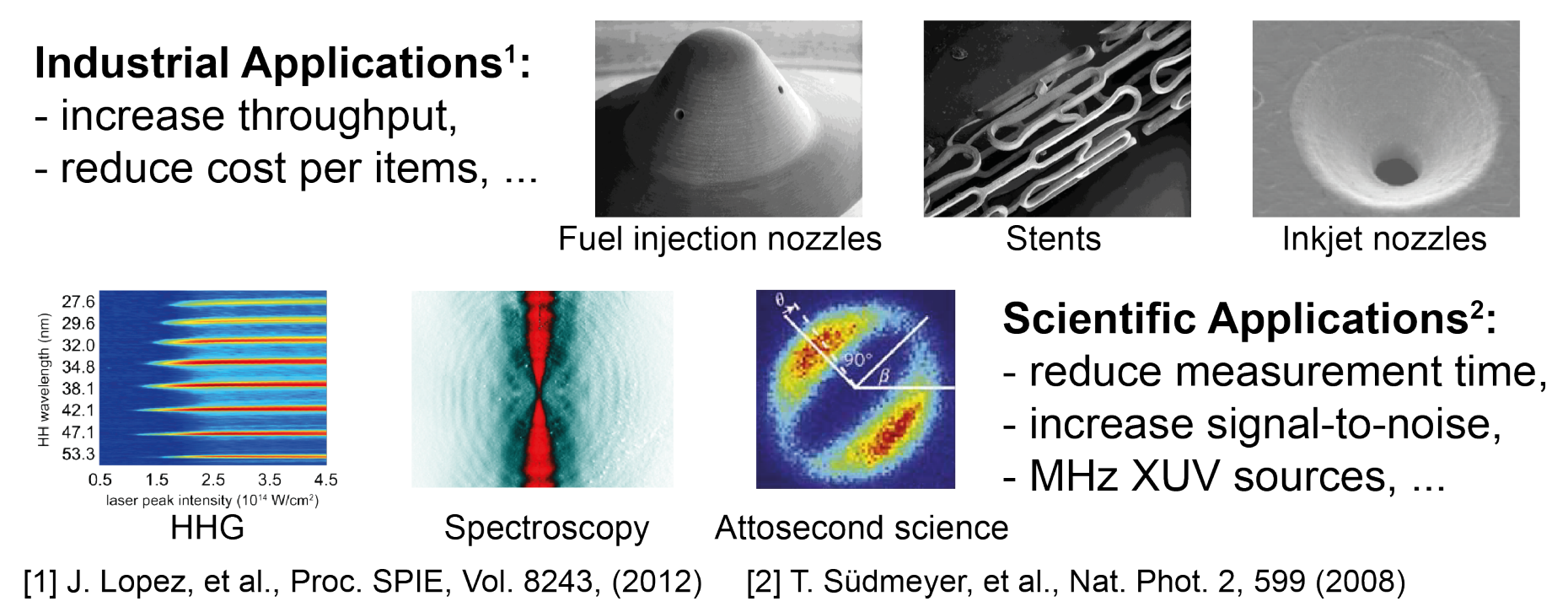Thin Disk Laser
Childpage navigation
In the last few decades, ultrafast lasers have become the main workhorse in many fields in science and technology. Nowadays, growing needs for faster acquisition times and higher yields are boosting demands for ultrafast laser sources with ever-increasing average power, i.e. ultrafast laser sources that combine high peak power (with tens to hundreds of megawatts) and high repetition rate (in the megahertz regime). The resulting lasers with hundreds to thousands of watts of average power, open up many new applications. One important example in science is the field of strong-field physics, for example high-harmonic generation or attosecond science. Another prominent application field, is the need in industry for high-speed and high-precision micromachining of a wide variety of materials including metals, glasses and semiconductors.
The progress made in recent years in the field of ultrafast high-power sources has been tremendous. Ultrafast lasers have nowadays surpassed the kilowatt average power milestone.
The use of thin disk technology for power scaling of ultrafast sources, both modelocked oscillators and amplifiers, has gained significant ground in the past few years. The thin disk concept is ideally suited for short pulses as it combines amplification with small interaction volume, therefore both nonlinearities and thermal distortions are minimized.
Passively mode-locked thin-disk lasers (TDLs) using SEmiconductor Saturable Absorber Mirrors (SESAMs) are an elegant option to reach the desired levels in table-top systems, as unprecedented high pulse energy and average power levels can be reached at MHz repetition rate directly from a passively mode-locked oscillator without any extra amplification. This approach has many potential advantages compared to amplifier systems with similar performance: for example in terms of reliability, long-term stability and complexity.

